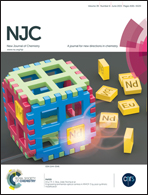Quantifying N-heterocyclic carbenes as umpolung catalysts in the benzoin reaction: balance between nucleophilicity and electrophilicity†
Abstract
Different types of N-heterocyclic carbenes, i.e. normal, reduced heteroatom stabilized, remote and abnormal carbenes, are computationally studied (THF-CPCM-B3LYP/6-311+G(d,p)//B3LYP/6-31G(d)) in the benzoin reaction to assess their characteristics as umpolung catalysts. Two general trends are apparent with an increasing number of nitrogen atoms in the heterocycles: (a) the tendency for the initial addition of the carbenes to the aldehyde decreases, due to decreased nucleophilicity; (b) during the umpolung step, the developing negative charge in the Breslow intermediates becomes better stabilized by conjugation with the adjacent, more electrophilic carbene carbon atoms. Relative to the starting reactants, the free energies for the intermediates and the transition structures decrease with more remote positions of the nitrogen atoms to the carbene carbon atoms. Among the normal N-heterocyclic carbenes oxazole-2-ylidene shows the lowest activation barrier for the rate determining umpolung step (Ea = 25.2 kcal mol−1) in the benzoin reaction. The comparison of all computed carbenes points to remote and abnormal pyridyl-3-ylidene as catalyst with the lowest activation energy (Ea = 24.0 kcal mol−1). This abnormal carbene exhibits the best balance between nucleophilic and electrophilic characteristics in the benzoin reaction.


 Please wait while we load your content...
Please wait while we load your content...